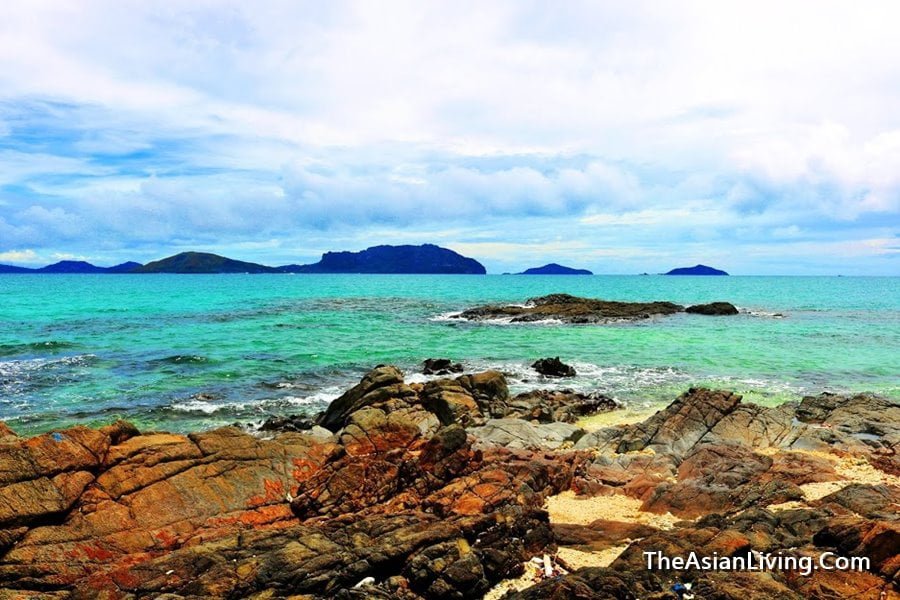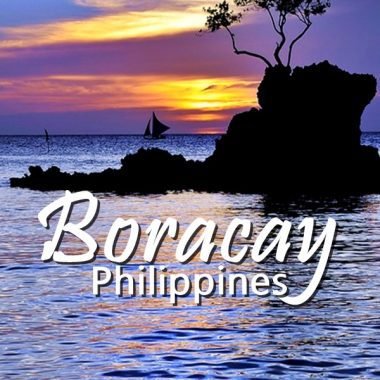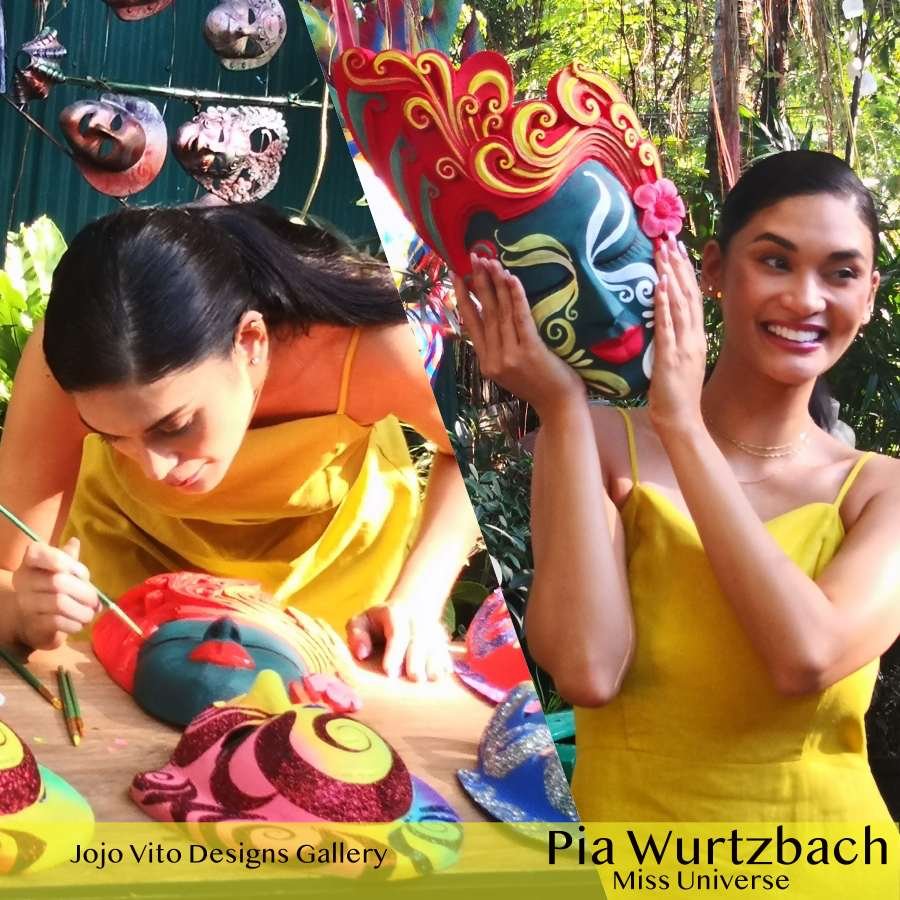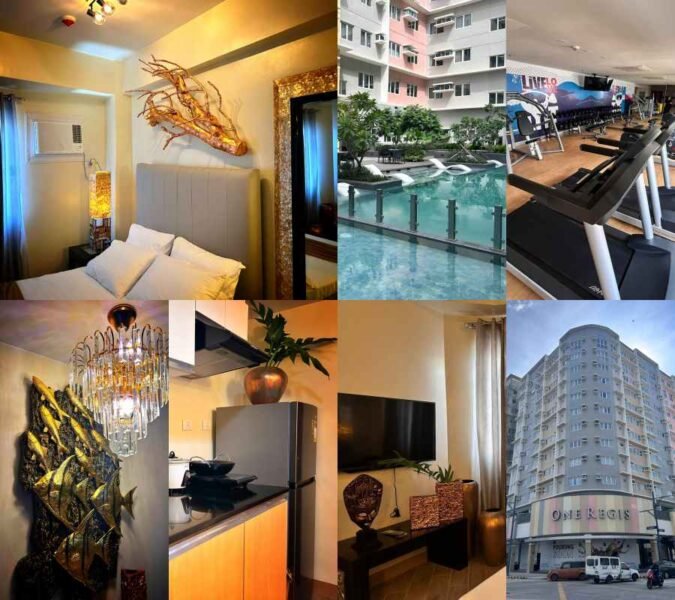![Gigantes Island [ Islas de Gigantes ], Carles Iloilo Gigantes Island [ Islas de Gigantes ], Carles Iloilo](http://fabasianlifestyle.com/wp-content/uploads/2020/02/GIGANTES-ISLAND.jpg)
Gigantes Island [ Islas de Gigantes ], Carles Iloilo
Table of Contents
Discovering Gigantes Island/Islas de Gigantes in Carles, Iloilo, Philippines
As the 2nd class municipality of Iloilo, Carles holds several places to visit and activities to experience. If you haven’t researched yet fo the things to do in this beautiful place, then this article is the perfect one for you.
![Gigantes Island [ Islas de Gigantes ], Carles Iloilo Gigantes Island [ Islas de Gigantes ], Carles Iloilo](http://fabasianlifestyle.com/wp-content/uploads/2020/02/IMG_2629.jpg)
Gigantes Island [ Islas de Gigantes ], Carles Iloilo
Things to Do at Gigantes island/ Islas de Gigantes When You Do A Tour
May it is the beach, pools, or the island vibe that you are after, the Islas de Gigantes will never disappoint you. The people in the area will welcome you with comfortable with modest accommodations and amenities, making your stay a memorable and unforgettable one.
Cabugao Gamay Island
The place offers an excellent opportunity for some island-hopping adventure. Look for the vantage point and take photos! Due to its unique shape, you will be able to capture the whole island as the backdrop of your photo sessions. More than that, the swimming and sunbathing experience are also highly recommended.
![Gigantes Island [ Islas de Gigantes ], Carles Iloilo Gigantes Island [ Islas de Gigantes ], Carles Iloilo](http://fabasianlifestyle.com/wp-content/uploads/2020/02/IMG_2736.jpg)
Gigantes Island [ Islas de Gigantes ], Carles Iloilo
Antonia Beach
Antonia Beach is characterized by fine white sand and clear waters. There are available viewing deck and restaurants in the area for you to rest while enjoying the view. More so, camping facilities are available for those who would like to stay overnight.
![Gigantes Island [ Islas de Gigantes ], Carles Iloilo Gigantes Island [ Islas de Gigantes ], Carles Iloilo](http://fabasianlifestyle.com/wp-content/uploads/2020/02/capture-20200220-211642.png)
Gigantes Island [ Islas de Gigantes ], Carles Iloilo
Bantigue Island Sandbar
Considered as the longest sandbar in Carles, heading to the Bantigue Island during low tide is highly recommended. This time, you will see the long stretch of sand and get to take amazing photos and even enjoy some swimming sessions. A big part of the sandbar is immersed in water during high tide.
![Gigantes Island [ Islas de Gigantes ], Carles Iloilo Gigantes Island [ Islas de Gigantes ], Carles Iloilo](http://fabasianlifestyle.com/wp-content/uploads/2020/02/IMG_2742.jpg)
Gigantes Island [ Islas de Gigantes ], Carles Iloilo
Gigantes Sur’s Rock Climbing
The “Boulevard” or the row of limestone cliffs in Gigantes Sur offers the tourists the opportunity to challenge and measure their climbing abilities. The climbing process is complicated, but once you see the 360 degrees view from the top, all the hard works will be worth it.

Gigantes Island [ Islas de Gigantes ], Carles Iloilo
Old Lighthouse
Situated at Gigantes Norte, the centuries-old lighthouse is waiting to be explored. Despite its old age, it is still well-functioning and fully operational! It has undergone a series of reconstruction and modernization processes, but its natural and antique beauty is still there. You may also opt to climb the lighthouse and get to see the fantastic view from the top!

Gigantes Island [ Islas de Gigantes ], Carles Iloilo
Pawikan/Bakwitan Cave
Situated in Gigantes Norte, the Pawikan or Bakwitan Cave is a literal lifesaver. During the Japanese occupation, soldiers used the Bakwitan cave as their fortress. Now, the cave also serves as an evacuation area during strong typhoons and storms. Visiting the cave requires some cliff climbing to reach the area.

Gigantes Island [ Islas de Gigantes ], Carles Iloilo
Pulupandan Island
A small island with one coconut tree and single nipa hut in the middle. Yes, the place seems to be isolated, but the beauty it holds is beyond amazing. The rock formations at the back, the blue waters, and the fine white sand make the place a perfect paradise.

Gigantes Island [ Islas de Gigantes ], Carles Iloilo
Scallops
Carles is known as the scallops capital of the country. With such a reputation, it is only fitting that you get to try any dish or cuisine involving scallops as the primary ingredients. The locals take pride in their primary source of living. Thus, they do their best to deliver the most palatable scallops dishes to tourists.
![Gigantes Island [ Islas de Gigantes ], Carles Iloilo Gigantes Island [ Islas de Gigantes ], Carles Iloilo](http://fabasianlifestyle.com/wp-content/uploads/2020/02/IMG_2511-1.jpg)
Gigantes Island [ Islas de Gigantes ], Carles Iloilo
Tangke Saltwater Lagoon
The limestone formations on both sides paired with the crystal clear waters will invite you for some dipping experience, especially during high tide time. To reach this place, you will have to climb some rocks and go down directly at the shore of the lagoon. This is a very refreshing activity to try.
Sicogon Island
A newly developed Island near Gigantes Island. If you would like to experience a simple beach vibe like a local, then Sicogon Island is the place for you. You can ask your boatman to bring you to the Island.
Solina Beach and Nature Resort
Located in Carles, Iloilo, you can visit this resort as a segway to your Gigantes Island tour. Lush green surroundings while enjoying a hammock stay, this is what the Solina Beach and Nature Resort can offer. They also have pools, Jacuzzis, lounges, restaurants, and everything that can make you feel comfortable in your vacation.
The beauty of Gigantes Island is a refreshing way to rest and recalibrate. Heading to this place, you can experience the unexplored and natural wonders of the beautiful Islas de Gigantes.
![Gigantes Island [ Islas de Gigantes ], Carles Iloilo Gigantes Island [ Islas de Gigantes ], Carles Iloilo](http://fabasianlifestyle.com/wp-content/uploads/2020/02/IMG_2540.jpg)
Gigantes Island [ Islas de Gigantes ], Carles Iloilo
Related Posts
- THINGS TO DO IN BANGKOK | TOURIST SPOTS
- THINGS TO DO IN EL NIDO, PALAWAN | TOURIST SPOTS
- DISCOVERING TOP ASIAN SPICES AND HERBS
- CAMOTES ISLAND TOURIST SPOTS
- CONSTIPATION TREATMENT | Natural Remedies
- HONGKONG TOURIST SPOTS
- MACAU TOURIST SPOTS | 20 Attractions You Shouldn’t Miss
- BEST OF THE BESTS: Top Colorful Festivals in the Philippines
- THINGS TO DO IN BORACAY, PHILIPPINES
- KAKANIN | NATIVE DELICACIES IN THE PHILIPPINES
- Fabulous at 50: A Journey of Celebrations, Giving, and Joyful Memories
- Stress Management : Recognizing Symptoms, Mastering the Techniques
- Solo Parent Act : Embracing RA 8972 for a Brighter Future
- CENECO BILL DEPOSIT, REFUND NOW! | Magna Carta for Residential Electricity Consumers
- Nong Nooch Garden | Pattaya: A Journey of Enchantment and Adventure
- Sanctuary of Truth , Pattaya : Unveiling the Majestic Marvel
- Khao Yai Art Museum : Embracing the Fabulous Asian Lifestyle
- Chao Phraya Abhaibhubejhr Hospital and Thai Traditional Medicine Museum
- Egg Facial Mask: A Nourishing and Rejuvenating Skincare Treatment
- Mayonnaise Hair Treatment: DIY Bonding Session for Luscious Locks
- Compassion: A Path to Fabulous Living and Lasting Legacies












1. The first step in conducting the training needs analysis is determining the objective or the desired outcome of DOT. What do DOT wants to achieve? For this instance, DOT wants to improve the customer service of tourist guides and boost the popularity of Islas Gigantes in Carles, Iloilo. Its goal is also to help jobless people to have jobs through tourism.
Second step is linking employee behavior with desired business outcomes. Do the tourist guides know what to do? In this case, the tourist guides are in different knowledge and skill level since they are a mix of professional tour guides that have been in the industry for years and others that are new into the job such as boat operators and vendors that came from Carles, Mainland. Even other participants have never been to the island.
The 3rd step in the TNA analysis is identifying trainable competencies. In this scenario, aside from training the participants, other tools such as coaching, counselling and other ways may be more effective than conducting trainings for them. As their training consultant, I should determine which of the competencies needed are trainable so that I can include it in the training program.
The fourth step would be evaluating the competencies of the tour guides. For professional tour guides or for participants who have been in the industry for years, we can use the performance evaluation surveys to evaluate their performance when it comes to their competencies. There are many tests available on the market to measure specific skills, abilities and personality characteristics needed for tour guides.
5th step would be determining their performance gaps. We should determine the performance standard set by DOT for them. Those who failed below the standard, should be considered in need of training. Much so, those who are new in the jobs should undergo the training suited or fit for their needs.
6th step would be prioritizing which training is needed first based from the data above. We should take note of the percentage of the tour guides needed for training.
7th step would be analyzing what is the best way to train the tourist guides. We should consider the knowledge, skills and experience of the participants. Each of them needs different training programs fitted for their needed competency to reach the performance standard of DOT.
8th step in performing the training needs analysis will be conducting a cost benefit analysis. We should consider the budget set by DOT for training the participants. Having a training program that meets as many competencies as possible to close performance gaps will be highly preferable.
Last step of the TNA would be planning for training evaluation. It should be clear to us, on how we can decide if the trainings set for the participants will be effective and has indeed achieved the goals of DOT.
2. The contents of the training program will come from the knowledge, skill, attitude and competency needed for tourguides. Since the participants have different level of competency, they should join the training program that is needed to improve their competencies. Here are some of the contents of the program:
1. Knowledge of the tour area: Isla Gigantes (ideal for participants who are just new in the island. Professional tour guides can also attend for refresher)
2. Communication Skills, , Adaptability skills (keen ability to improvise and adopt), rapport building skills, flexibility, timeliness and punctuality, professionalism, Charismatic personality, sense of humor.
3. Safety protocols
3. The tourist guides should know the island by heart. They should visit each of the tourist spots mentioned in the article. Each spot has their own history, meaning and beauty. They need to see its beauty.
1. TRAINING NEEDS ANALYSIS
1st step. Determine the goal which is to attract local tourists to visit Islas Gigantes, Carles, Iloilo by developing the skills of the tour guides.
The GOALS are:
1. To improve the level of knowledge of professional local tourist guides, as well as their engagement skills and competence, resulting in a better tourist experience.
2. To provide new tour guides with new skills, knowledge, or information that will help them carry out their duties well, leading to enhanced customer service and job efficiency.
3. Align the skill sets of all tourist guides with DOT criteria.
2nd step. Determine the role’s main competencies and assess each tour guide’s current abilities. Train the tour guides with “x” and “unlikely” marks below to gain the corresponding specific knowledge and skills required for the job. Professional tour guides may be trained to align their skills and knowledge as per the standard of DOT.
Identified and Required Knowledge and Skills/Competencies
1. Familiarity of Islas Gigantes and other information about the islands
2. Conformity of required safety standards
3. Strong communication skills
4. Approachable and engaging personality
5. Excellent organizational skills
6. Outstanding time management
7. Passion about traveling
8. Ability to Manage Tourists
Professional tour guides have all of the necessary knowledge and skills, whereas boat operators have competencies 1, 6, and 8. Vendors definitely possess # 4 and # 5 qualities because they are experts in working with buyers. Locals and participants who have never been to the island should be trained in all necessary knowledge and skills, vendors and boat operators will be trained in specific skills/knowledge that they don’t have yet, and professional tour guides may be trained to match their skills and knowledge with DOT standards.
3rd Step. After determining the type of training that each tour guide has to have, present the cost analysis to DOT which includes the training time, content of the training, travel, and logistical expenses.
4th Step. Create a training design. The training method that will be used is classroom training wherein there would be a discussion after the training. Provide training certification as an external validation that the learners are trained and obtain the necessary skills to be effective tour guides.
5th Step After identifying the position’s KPIs, examine each tour guide at the end of the training to see if their abilities have improved.
2. The following topics will be covered in the training:
I. Professionalism (Do’s and Don’ts). Establish a code of conduct.
II. Relationship building by understanding what the tourist wants during the tour, as well as the flow of introductions and what is good communication.
III. Tour Arrangement. Knowing the tour group, pre-departure tests, and how to conduct a tour.
The training should provide extensive information about each Gigantes island, such as what they will see, journey time, estimated time spent on each island, geographical location of the island, history of the island, and population. The tour guide should consider each tourist’s safety above anything else.
IV. Tour Activities. The sequence of going from one tourist spot to another by engaging the tourists and makes the trip exciting. Explain the activities in each spot/ island and the schedule of daily activities.
V. Initiative and Leadership. The module may contain scenarios or activities to
help tour guides enhance their decision-making, risk management, and complaint-handling skills.
VI. Reading Islas De Gigantes articles and tourist comments. This will be a discussion. Ask the tour guide about how to handle each bad comment.
3. Highlight the essential or exhibited natural heritage value, historical relevance, natural or manmade beauty, and leisure and enjoyment offered by each destination.
Below are a few examples of how to highlight the attractions.
Cabugay Gamay has its unusual shape and natural beauty which is made up of rock hills covered with forests.
Antonia Beach’s magnificent white sandbar appears to form a little cape.
The Bantigue sandbar on Isla de Gigantes has a brownish color that changes to a yellow color around sunset.
A tour guiding profession is very important in the Tourism Industry. The behavior of the tour guide, the skills, knowledge and expertise contribute in achieving a high degree of satisfaction among tourist.
As hired Training Consultant of Islas Gigantes in Carles, Iloilo and considering that tour guides are mix of professionals, local tourist guides and others from mainland Carles, I will propose to the Management of Islas Gigantes to conduct the following procedures:
1. Make an announcement inviting all tourist guide for a proposed training and development seminar. An application form will be given to those who are interested to be filled-up and to be submitted to local Tourism Office or at Islas Gigantes Admin Office.
2. A survey will be conducted based on the gathered demographic information submitted wherein classification of tour guide will be made as to the level of education and experience are highly prioritized.
3. A scheduled training program will be conducted such as advance training for those who were already professionals and a basic training program to those who are tour guiding that falls below the qualification of a professional tourist guide.
4. The topics to be included in the program are as follows:
a) Qualifications of a Tour guide.
A Tour guide must be excellent in verbal communications skills, The tour guide must be flexible and open to change in any situation, have patience and ability to be calm in stressful situation, they must be friendly and passionate, have a good sense of humor to maintain a happy and exciting sightseeing, knows a lot about the place to answer questions while guiding the guest. Have a good memory on the cultural and historic stories of the Islas Gigantes and have a good organizational skill to carry out the smooth tour schedule of tourist.
b) Basic Code of Conduct of a Tour Guide. Tour guide has been entrusted with guiding the tourist. He must be punctual, reliable, honest conscientious and tactful at all times. The tour guide must be polite in welcoming the guest and very accommodating as to the needs of Tourist of Islas de Gigantes.
c) The duties and responsibilities. Tour guide acts to welcome guests, they show hospitable attitude that reflects and influence guest’s perception of the people and place. They organize itineraries, and plan tours. Tour guide are always ready and prepared for giving cultural and historic presentation during travel and offer sightseeing advices. Tour guide facilitate arrangements on transport, food selection and accompanying tourist to every destination. Translating and interpreting local languages and answers questions. Tour guide ensure and explain safety and health protocol during travel. A tour guide must be able to know about tourist attractions of the town to answer tourist questions.
d) The importance of a Tour Guide in the Tourism Industry and in the community. Tour guides having the lead role in Tourism Industry cannot be effective in performing their task without necessary orientation and training. Suitable behavior and necessary skills are needed to meet and exceed the tourist expectations. The excellent tour guiding, their behavior and the skills in achieving the satisfaction of tourist attracts new guest which increases the competitiveness of the Tourism sector.
e) Salary of a Tour Guide. With the aid of training seminars, Islas Gigantes can help local tourist guide to uplift the standard of their Profession not only for monetary value but also for promotion of Islas Gigantes as one of the best Tourist destinations that a tour guide should be proud of.
5. Assessment of the program: A set of questionnaires will be answered by the participants during seminars to further evaluate the result of their understanding about the training. Training seminars will a conducted into 3 to 5 sessions to give chances to those who are slow learners but interested to be an excellent tour guide. As a result of the training, we can determine the difference on their cognitive and behavioral responses before and after training was conducted. The objective will be “No tour guide will finish the training seminar without mastering the basics of tour guiding”. The Islas de Gigantes Management will make guiding procedures. With the support and cooperation of the Department of Tourism, surely Islas de Gigantes will be known for its history and culture not only locally but in the entire country even the world.
6. A certificate of Training will be given as a recognition to those who will finish the complete seminar. An Identification Card will be issued as Certified Tour Guide to prove that Tourist and guest visiting Islas Gigantes will be treated well during their stay in the Island.
Gigantes Island or known as Isla de Gigantes is a tourist destination where to some people views is a place to enjoy much of your time spending happy moments with your friends and loved ones. Seeing the sea and island hopping in ten islands is an exciting experience to many. As the scallop’s capital of the Philippines and the abundance of fresh seafoods, the white beaches and clear waters, Tourist will have no other reasons not to visit the island. Mabuhay Islas de Gigantes, Mabuhay Philippines, the best place of Tourist Destination.
INTRODUCTION
Travel is slowly opening back up in the Philippines. The Inter-agency Task Force for COVID-19 Pandemic has given the go signal to allow travel with less requirements for those who are fully-vaccinated. Traveling, however, is not the same as it was pre-pandemic: whether or not you’ve been vaccinated, you must still take precautions when traveling. On planes, buses, trains, taxis, and other modes of public transportation, everyone must wear a mask and face shield. If you haven’t been vaccinated, you are required to present your test result for the virus one to three days before your arrival to your travel destination, and some requires full seven days quarantine once you arrive. Given that minimum health standard should still be observed, these are some items that the tour guides, drivers, and other staff should be aware of.
ORGANIZATION ANALYSIS
The main goal of the Department of Tourism is to help alleviate the economy of the country. Domestic travel will drive the recovery of the country’s tourism industry, but Filipino travelers are mostly just planning to visit closer-to-home destinations and spend less due to lingering health concerns caused by the COVID-19 pandemic.
Beaches are expected to have a surge. The pandemic has raised traveler expectations about health and safety, and travelers are expecting establishments to adhere to best sanitation and health practices.
PERSON ANALYSIS
The tour guides are not health experts. Some may only even have basic knowledge about coronavirus and how to prevent the spread. To address this, DOT will invite medical experts to discuss coronavirus, what are the symptoms, and what to do to avoid contacting the virus, among others.
WORK ANALYSIS
The tour guide’s duties include planning travel itineraries, familiarizing customers with the island and ensuring the group’s safety at all times. You should also keep up to date on attraction around the island that might be of interest to customers.
The primary goal of a vendor is to make money by selling items that people require or desire. These items are frequently food-related, as these are the easiest permits to obtain.
A boatman is a man who is paid by people to takes people to the mainland as well as other islands for travel.
TRAINING INCLUSION
Professionalism is the first module:
• Demonstrate professional behavior at all times while working;
• Practice responsible tourism while guiding;
• Maintain tour guiding knowledge and skills;
• Apply ethics in tour guiding situations; and
• Always reinforce the minimum safety requirements
Building Rapport is the second module.
• Recognize the motivations and behavior of tourists
• Clearly communicate with tourists
• Establish a rapport with the tourists/tour group members
• Introduce yourself and others to tour participants in an appropriate manner
Tour Management is the third module.
• Prepare for tours, including researching incoming tour group
• Conduct pre-departure preparations
• Conduct a tour
• Finalise a tour
• Work within the Law as it applies to tour groups and guiding
Tour Management Training will include the following.
Resorts and Accommodations
Gigantes Norte Island has the majority of the established resorts. These resorts cater to budget-conscious travelers by providing basic accommodations. Tent-style lodging is also popular in Antonia Beach and Cabugao Gamay Island. In addition, adventurous travelers can arrange for a homestay at Gigantes Sur.
How to get to the island
1. Islas de Gigantes is located in northern Iloilo, but if you fly from Manila to Iloilo City, the total travel time (air and land travel) to Islas de Gigantes could take up to 7 hours. Iloilo City is physically closer to Islas de Gigantes than Roxas City. Thus, the quickest route to the lovely Islas de Gigantes is via Roxas City in Capiz, which could take up to 5 hours and 30 minutes (air and land travel). It may take 50 minutes to fly from Ninoy Aquino International Airport to Roxas City. You can book your flight ahead of time with Philippine Airlines or Cebu Pacific, a low-cost and budget local airline.
2. There are no jeepneys or taxis close the Roxas City city airport because tricycles are the primary mode of transportation in the city. Once you arrive at the airport, find the tricycle terminal and tell the driver you want to go to the Ceres bus terminal. It should be noted that in Roxas City, there are no standard tricycle tariff rates. The journey can take about 20 minutes.
3. The bus fare from Roxas City, Capiz to Estancia, Iloilo may be 100 pesos, and the travel time can range between an hour and 45 minutes or up to two hours. It is worth noting that there are no air-conditioned buses to Estancia. Alternatively, taking a van to Estancia is more expedient. The fare is $75, and the travel time is about an hour and 45 minutes.
4. Take a tricycle to Estancia port from the Estancia bus terminal. The special trip fare is 80 pesos. If you’re on a tight budget, the single fare is 30 pesos, but you’ll have to wait for other passengers heading to Estancia. The travel time is about 15 minutes.
5. From Estancia Port, take a passenger boat to Islas de Gigantes. Pay the terminal fee in Estancia Port, price now may vary. Notify the tourism officer that you will be visiting Islas de Gigantes. The fare is 60 pesos, and the travel time is 2 hours. It is important to note that there is only one trip per day from Estancia Port to Islas de Gigantes. At 1:00 p.m., the boat departs. If you miss the 1:00 PM trio, you can hire a private boat to Islas de Gigantes for 4,500 Pesos.
Other Activities in Isla de Gigantes
Island Hopping – For up to ten people, chartering a pumpboat for a full-day island hopping tour around Gigantes (including a guide) costs P1,500 to P2,000. The guide costs an extra P500.
Antonia Beach – Antonia Beach, located in Isla de Gigantes Sur, Carles, is one of Iloilo’s hidden gems. P20 admission fee per person.
Cabugaw Gamay Island – Cabugao Gamay is a small island in Carles, Iloilo, two kilometers off the coast of Isla de Gigantes Sur. P20 per person admission fee.
Tangke Gigantes Norte Lighthouse – The station was built in 1895 as part of a Spanish lighthouse project that spanned the Philippines. The keeper’s house was saved, but it was in ruins. The masonry walls are white, and the roof is made of corrugated galvanized iron sheet with a red paint finish. Roundtrip motorcycle taxi transfer is P60 per person.
Bakwitan Cave Tour – P500 for the cave guide and P200 for roundtrip motorcycle taxi transportation.
The Covid 19 pandemic has greatly affected a lot of businesses, specifically the tourism industry. Fortunately, tourism in the Philippines is starting to allow local tourists to visit some of the destinations. However, tourists shall follow safety protocols to prevent the spread of the virus.
As a training consultant who is tasked to train local tourist guides, the Training Needs Analysis is essential to have an effective training program.
Here are the following steps for a Training Needs Analysis:
1. Determine the desired business outcomes.
– Those professional tourist guides who have been in the industry for years should be re-oriented of the company goals, and those who are trainees should have their orientation first so everything will be aligned according to the desired business outcomes.
2. Link desired business outcomes with employee behavior.
– As a training consultant, I should know the tourist guides’ behaviors and so as their competencies. This is to ensure that only the competencies that are deemed necessary should be considered for inclusion in the following steps.
3. Identify trainable competencies.
– It is said that not every competency can be improved through training. Thus, we should identify those competencies which are amenable through training. Those new trainees should be ready and well-versed about Islas De Gigantes before deployment.
4. Evaluate competencies.
– This time, we should evaluate the tourist guides’ competencies as to where they excel and as to where they should be developed.
5. Determine performance gaps.
– After evaluating competencies, we can then determine who among the tourist guides needs improvement in a particular competency.
6. Prioritize training needs.
– In prioritizing training needs, we should identify what are the key needs, then analyze current skill sets, and lastly, put together a training road map.
7. Determine how to train.
– Given the training priorities that we have, we should consider how to train the tour guides. For instance, they should tour around Islas Gigantes first and know everything about its history and all.
8. Conduct a cost-benefit analysis.
– We should consider the cost associated with the training methods.
Cost factors include:
• Required training time;
• Training content development if designed in-house;
• Training evaluation and acquisition if purchased from vendor;
• Training content delivery;
• Lost productivity from time spent in training; and
• Travel and logistical expenses.
9. Plan for training evaluation.
To determine whether the training is effective, we should plan for training evaluation.
Questions the evaluation process should answer are:
• How much did the training improve the competencies targeted in the training?
• How much did the training improve employees’ actual job performance?
• How much did the training improve the meeting of business objectives?
• How much did the training result in a positive return on its investment?
The questions employers want answers to will determine the method and
components of the evaluation process.
The possible content of the training program are as follows:
1. Standard Operating Procedures of the tourist guides.
2. Safety Protocols
3. History of Islas de Gigantes
4. Presentation on the various attractions of the island.
5. Trainers
6. Communication skills training
7. Resources to be used.
8. Trainees’ competencies
Thus, the tourist guides should be assigned to a specific attraction of Island de Gigantes where their competencies excel.
INTRODUCTION
Tourism training programmes can play a vital role in preparing tour guides to deliver their services in appropriate ways, respecting not only the diversity of customers’ access needs but also specific requirements related to disabilities or long-term health conditions. With suitable training, tourist guides, front-line staff can make guests feel welcome and, in some situations, even overcome some of the physical and functional barriers that are still present in today’s environment. Accessibility training gives tourist guides and staff the necessary knowledge, competences and skills to cope with diverse situations and customer needs. With greater confidence, tourist guides, managers and front-line personnel are able to handle situations which could otherwise be seen as difficult or threatening. Inasmuch as the tourism industry is basically a service industry, it should continually concern itself with improving tourism services.
OBJECTIVES
To achieve high standards of selection, training and certification of all guide practitioners in the Gigantes Island. Also, the aim of this is to carry out an analysis of the value that tourism companies grant to the training of the people working in this sector, specifically in Gigantes Island , which includes tourists who is willing to go the “extra mile” enjoying the beautiful seascapes and a laid-back island lifestyle that Gigantes has to offer as the islands are blessed with pristine white sand beaches, bountiful fresh seafood, and jagged rock formations shrouded by mystical tales of locals.
METHODOLOGY
The seminar shall be conducted using the following approaches:
• Group dynamics
• Lecture discussion
• Written case exercise
• Field trips / Immersion
• Research Work
TOUR GUIDE RESPONSIBILITIES
Most tour guides are freelance, hourly workers whose livelihoods depend not only on regular work but also on tips from appreciative tourists. They are unlikely to have paid sick leave, unemployment insurance or any other benefits enjoyed by many salaried workers. A good tour guide is articulate, easy to understand, has the physical capabilities to command attention and project their voice across potentially large groups of people. They should also be able to communicate one on one, answer questions with calm and remain approachable even when under pressure. Typical responsibilities include:
• undertaking research and planning tours
• preparing and giving presentations
• offering sightseeing advice
• organising and leading excursions
• problem solving
• translating and interpreting
• transporting and accompanying tourists.
POSSIBLE CONTENT OF THE TRAINING PROGRAMME
TRAINING OUTLINE:
1. Tourism Overview
• Structure of the tourism industry
• Components of the Gigantes Island tourist product/service
2. Tour Management Module
• Tour management
• Tour Operations
• Tour service and marketing procedure
• Roles and Responsibilities of a Tour Guide
3. Development of Related Tourist Guide Skills:
• Communication skills (include learning of different dialect/languages, if needed)
• Human and customer relations
• Managing Crisis Situations
• Practical application of Tour Guiding Techniques
• Field research work
• Tourist Safety / First Aid
4. General Subject Knowledge
(Which include Environmental Concerns & Protection, Geography, Protocol, Etiquette & Social Graces)
• Cabugao Gamay Island
• Antonia Beach
• Bantigue Island Sandbar
• Gigantes Sur’s Rock Climbing
• Old Lighthouse
• Pawikan/Bakwitan Cave
• Pulupandan Island
• Scallops
• Tangke Saltwater Lagoon
• Sicogon Island
• Solina Beach and Nature Resort
Note: Local History & Culture pertinent to the area/region concerned must be included
5. Actual Tour / Demonstration
• Familiarization Tour
CONCLUSION
Part of running a successful company in the tourism industry has nothing to do with business at all, but the people involved. A hugely important aspect of running a business in the tourism sector is having people on your team who will inspire travelers and locals to come back and tell their friends. As the COVID-19 pandemic has brought the travel industry to its knees, compromising most up-close learning about people, places, and cultures, tourist guides were also affected. But, Gigantes Island will always be a beautiful set of islands that make up a paradise of pristine beaches, clear water, huge rock formations, stunning, and secluded beaches with great tourist guides.
TRAINING NEED ANALYSIS: FOR GIGANTIS ISLAND
Training need analysis has huge significant role in developing the knowledge and skills of the tour guide with experience or non-experience person.The purpose of the training need analysis is to let the tour guide to learn the adequate knowledge on their respective job responsibility to execute their task appropriately and successfully.Hence, it will help the consultant to make a number of planning, decision on what strategies and learning activities need to do on the training day to improve the stregnth, and motivate the tour guide.
As a consultant and also don’t know about the GIGANTIS ISLAND- I need to come down to the place and start to check and ask around or do a small survey to be knowledgeable about that place and the history as well of the island and i will able to share during the training specially to the new tour guide which is not residing the gigantis island.
THE PROGRAM GOAL’S
1.Title of the Training: TOUR GUIDE TRAINING PROGRAM FOR GIGANTIS ISLAND
2.General Goals: TO LET THE TOUR GUIDE TO BE MORE KNOWLEDGEABLE ENOUGH ON THEIR JOB SCOPE AND RESPONSIBILITIES
3.Specific Goals: TOUR GUIDE NEED TO MAKE SURE TOURIST WILL ENJOY THE TOUR WHILE COMPLYING ALL INSTRUCTION AND STANDARD PROTOCOL ” SAFETY FIRST”
INTRODUCTION–> ABOUT THE GIGANTIS ISLAND IN CARLES
Tourism and Hospitality industry been affected so hard this cover-19, pandemic not only in our country Philippines but the entire world are suffering on this for almost 2years already. But this unprecedented situation thought us to be more grateful and resilience to face the new normal way of our daily life and most important is to accept and learn how to I’ve with it.Our tourism and hospitality industry also learn and accept the new ways on how to accommodated our tourist or guest.
THE GIGANTIS ISLAND IN CARLES–> Is one of the beautiful island in western visayas specifically at iloilo privince. In the remote island of cares, Charles have two biggest island which are the gigantes norte and gigantes sur. This island have a population of 12,225 as of 2012.
Gigantes island surrounded with eyes striking white sand, coolest blue water, abundance seafoods etc. But this island don’t have a source of electricity they are using battery, candels or the native kind of light “meets or kingki ” in our ilonggo dialect. Gigantes have a very big potential to be popular not only in the philippines for sure it will reach to other country, specially if the DOT will and support this island.
KEY POINTS TO BE DISCUSS:
1. What are the demorgraphic profile of the participant in terms of?
> GENDER
> AGE
>ECONOMIC STATUS
2.WHO WILL BE THE PARTICIPANT?
A professional tour guides it is easy for them to start the job again because they already have knowledge about the GIGANTES ISLAND before cover-19 pandemic, But they need to know the additional information specially the new protocols for safety pre-caution.
For boat operators they also have knowledge about the island history and same thing just need to let them know what is the updated and additional information like for example: the frequency of the boat travel in 1 day, or the new traveling timing from 1 island to another island).
< VENDORS-(from charles mainland) Since this PARTICIPANT is not from the gigantis island they need to learn what is the history of the that island then they able to do their task as a tour guide and also they need to know about addition information too.
This training needed to help our local tourism industry to recover from impact of covid-19 pandemic. Moreover, to help the local participant and other tour guide who is joining this training to gain back their sources of income to support their respective families.
> To help DOT for promoting again the GIGANTIS ISLAND, even just started to a local tourist at first.
4.IDENTIFY TRAINABLE COMPETENCIES OF THE PARTICIPANT
> PROFESSIONALISM–> As a tour guide punctuality is very important you need to be at the waiting area at least 10mins before your tourist arrival, Then you able to WELCOME them with a pleasant ” HELLO with a SMILE”
> BE CONFIDENT–> To achieve this quality as a tour guide you have to be knowledgeable on your product means you need to know everything about the GIGANTIS ISLAND, Because people can feel and they will know if you are telling the facts.
> GOOD COMMUNICATION SKILLS–> Is very important and one of the strength of a tour guide to be acquire and this is the connection between tour guide and tourist, because you need to speak louder and clearly to avoid misunderstanding.
5.EVALUATE COMPETENCIES OF THE PARTICIPANT
> Tehcnical Competencies–> It’s refer to the related skills of the participant to essential task they have.
> Personal Competencies–> It’s not related to ANY skills of the participant, It’s more on characteristic or behaviour. But this is very important to blend to technical skills to produce a good tour guide.
6.Performance GAP of the Participant
> LANGUAGE- Participant at least need to learn how to speak basic or simple english/tagalog to help them to communicate to the tourist.
> Lack of clarity or slow pick up- As a trainer you need to make sure that all the participant can follow your discussion.
> Level of understanding- As we know different people different level of understanding, But as a trainer you need to test the participant if they all understand the topic you been discuss by asking them a question.
>Participant Productivity–> Trainer need to observe the participant if they still connected in the discussion of your topic or maybe some already feel sleepy or board.
7. 15MINUTE —> ICE BREAKER OR SNACK BREAK( Then contenue for remaining topic to be discuss)
8.SAFETY PROCEDURE AND PROTOCOLS
> Pre-departure checking due to covid-19 (IETF Rules)
1. Temperature Check–> Is a compulsory policy to check the temperature of the tourist must below 37.5 degree.
2. ANTI REGENT TEST( ART) Is must to do it this test to make sure tourist is negative or free from cover-19 virus.
3.Resigtration- Where the tourist to write down their personal information, for tour guide to double check if correct details of the tourist and is same on the master copy.
4. SAFETY GUIDELINES- As a tour guide this is one the most important job you have to make sure tourist will comply while on tour.
9. EVALUATION OR FEEDBACK FORM–> Before end of the training you need to do evaluation for the participant if how much they understand and learn for all the topic you been discuss with them.
10. 2HRS & 5MINS– Training time frame
The Analysis
PURPOSE:
The purpose of this guide is to provide you, the trainer, with guidelines about the presentation and learner support requirements for the course. This guide will enable you to plan, prepare, conduct and evaluate this course.
SCOPE:
This analysis is a seven day course. Training will take place 6 hours a day, excluding course opening and closing, tea breaks or any other unscheduled activities in class.
THE STATE OF THE BUSINESS
Safety and security
At the completion of this training trainees will be able to:
Know how to identify common health and safety risks.
Explain how to prevent common health risks and accidents.
Explain a sick guest’s health situation to a doctor.
Understand how to respond to an emergency.
Clean and dress a wound
Key Discussion:
Facilities: training room, laptop, beamer and projector, microphones and speakers.
Equipment: first-aid kit, hand washing basins, etc.
Additional teaching resources: Trainer’s guide, training manual for learners, A0 paper, markers, colour paper, scissors, adhesive tape, video clips.
Trainer Toolkits: must develop these themselves based on their local area: travel information tool kit for each destination which include: tourist maps, directory of tourism attractions and description.
List of major hotels, home-stay and contact details, addresses and phone contacts of banks, post office, emergency lines. A package of tour guide travel documents and forms.
Participants’ preparation: the participants are required to prepare at least a verbal presentation about one local tourist attraction in order to practice on days 5 and 7.
CONCLUSION
-Discussion on common diseases.
-Group discussion on preventing common accidents
-Identify necessary items available in the first kit.
As the hired training consultant of Department of Tourism for the tourist guides of Isla Gigantes, Carles, Iloilo, it is important for me to have a clear goal that is to achieve an enjoyable, informative, and safe experience for both tourists and service providers. As such, the following must be conducted to realize the goals set:
1. Visit the area for familiarization, identification of essential services, identification of the current challenges, and collection of other relevant information;
2. Analyzed the data collected to make appropriate training design and program timeline for each particular vendor or service provider that includes but is not limited to:
Knowledge of the areas of the tour, including the history
Ability to build a relationship with fellow vendors, service providers and build rapport with the visitors
Communication and delivery of the tour
Health and safety measures
The importance of feedback and evaluation as the basis for improvement
3. Training Implementation and evaluation to ensure the proper conduct of tour guiding and show understanding of the training;
4. Giving recognition to the tour guides and other service providers by issuing certificates for completing the necessary training which equips them for their jobs;
5. Overall assessment of the trainees and training conducted to identify the strong points of the tour guiding program, improve noted weaknesses, and address the challenges.
Conducting a Training needs analysis is very crucial in decision making and plays a vital role in the success of the organization. Inorder to conduct training needs analysis, there are factors that need to be considered: define organizational goals, define behaviors and required knowledge and skills, train people with the right resources, identify training gaps and there has to be evaluation right after to ensure learning retention.
The main objective of this study is to train local tourist guides in providing excellent customer service to be able to attract tourists and to boost the popularity of Gigantes Island.
Once objectives have been identified,assess your people: their behaviors and competencies. That way it would be easier for you to design a training curriculum that they needed the most and work on their areas for improvement. Training may vary depending on their competencies. Local tourist guides may have a different training compared to those boat operators and vendors.
Once competencies are identified,evaluate the people to train. You can prepare an assessment for them to answer on how much they know about Gigantes Island, things that they’re challenged with and something that they need so you can prepare the right material for them to perform their task and responsibilities. Another option is to have them demonstrate how to be a tourist guide and take note of their strengths and weaknesses for them to use as training talking points. Mentoring and coaching may be applicable for the local tourist guides since they already have experience in the field of Tourism. On the other hand, vendors and some identified participants may need classroom training since they need ample information on the highlights and attractions of the islands. Training may vary depending on their competencies. Checking for understanding is important to ensure learning retention. It can be a form of assessment, spot checks, show and tell and have them perform the task. Have them prepare a presentation to talk about the island and encourage tourists why they need to include Gigantes Island on their bucket list. Provide recommendations when necessary. “Experience is the best teacher, and the worst experiences teach the best lessons” – unknown.
Possible content of your training program:
Safety health protocol should be included
Training needs should focus on customer service: how to welcome and accommodate tourist, knows how to answer questions and entertain people
Communication plays an important role in making sure that we communicate to our customers(tourists) appropriately, be responsive to their needs, be receptive to whatever feedback they receive and take actions (if needed).
Product mastery (know your product: all islands in Gigantes, amenities, destinations, foods,favorite tourist spot, the whereabouts and a lot more)
Know the difference roles of a tourist guide (sometimes a photographer, a listener)
As for the boat operators, proper training is needed to operate a boat, destination, the travel time to and from, be mindful of the Do’s and Don’ts in riding a boat. Things that tourists can and cannot do.
Welcome suggestions and feedback from the tourists because that’s the only way to improve and to have a better experience in the future.
Gigantes island/ Islas de Gigantes is well known for its beauty and there are lots of things to do while on the island. As a tourist guide, we give our tourists all possible options and let them choose what they want to visit first on the list. If they’re into island-hopping,Cabugao Gamay Island is best for them. Bantigue Island Sandbar can also be the next travel destination for swimming sessions, enjoying the longest sandbar view when it’s low tide. Gigantes Island has a lot more to offer.
Tour guides play an essential role in the tourism industry. They are tasked with controlling the flow of information, forming structural gaps in the communication network. Thus, a guide must maximize his capital potentials, whether he has them or not, particularly communication capital. It is their responsibility to entertain visitors to their region and assist them in interpreting the sights they see. They help tourists in having a positive experience and do their best to take care of their guests. A tour guide assists and informs people on organized tours and individual clients about cultural, historical, and contemporary heritage at educational institutions, religious and historical sites such as museums, and other tourist destinations.
Tour guides are front-line tourism employees who play an essential role in shaping tourists’ experiences in a destination. The tour-guiding service is the foundation of the various tour services provided by tour operators. The ability of tour guides to provide quality service to tourists is critical not only to the business success of the tour operators with whom they are affiliated but also to the overall image of the destination they represent.
In any business, training needs analysis is a critical driver of development programs. As a significant component of the training program, it is a must requirement for both trainers and institutions because it provides a fundamental like with relevant learning and teaching process in any institution. It also determines and identifies the existing gap between the learning requirements and corrective measures to make any employee highly competent for the job. Furthermore, it serves as a link between the required and actual performance. It emphasizes the importance of investigating the organization’s needs, job performance, and the staff of any institution or business center. As a result, any training program should be carefully planned and designed by TNA.
Training Needs for Tourism Sector. The training process can be divided into four stages:
• Accessing any organization’s training requirements
• Training program development
• Training program implementation
• To assess the training program
This training process will help the training consultant determine what is needed to train the tour guides, boat operators, and vendors, including the venue, expenses, and effects on the participants.
The training consultant can conduct a needs analysis through the following procedures:
Step 1. Determine the desired business outcomes. This step will help the training consultant to determine if the program works on the participants (Tour guides, Boot operators, and vendors). For example, the consultant’s goal is to satisfy the tourist through a high quality of service and performance and ensure their security and safety.
Step 2. Link desired business outcomes with employee behavior. This step assists the consultant in determining each participant’s knowledge, skills, abilities, and characteristics. The consultant could conduct a survey.
Step 3. Identify trainable competitiveness. The tourism sector should use Organizational and employee performance to identify training needs.
Step 4. Evaluate competitiveness. Evaluate the service quality and tour guide performance based on the company’s criteria or metrics.
Step 5. Determine the performance gaps. After the evaluation of the training program, you will determine the gaps.
Step 6. Prioritized training needs. The consultant will prioritize these training gaps in the training program. The consultant will determine if how many participants need to train.
Step 7. Determine how to train. The training consultant may give an on-site tour to all the participants, including front-desk training, allowing participants to work on their teams or other participants and supervise them during their first tour. The training consultant can also use different methods to avoid unnecessary expenses such as game-based training, lecture, mentoring and coaching, and team training.
Step 8. Cost-benefit analysis. Training is sometimes costly, but step 7 will help avoid unnecessary expenses, and training consultants will balance the cost of training methods and the ability to achieve the organizational goals.
Step 9. Plan your training evaluation. This step will determine if the training program works on the participants, how much they improved their actual job performance, and if the training returns a profit on tourist sector investment. This step also includes evaluation based on the metric used by the tourism training consultant.
The training program’s content may be professional behavior, responsible tourism, research, guiding ethical standards, and brand representation. The trainer assigns each person based on their knowledge, skills, and cultural fit. The training consultant may conduct a different training program that fits on tour guides, boor operators, and vendors. For example, one of the tour guides is already familiar with the Cabugao Gamay Island, Bantigue Island Sandbar, Gigantes Sur’s Rock Climbing, and other already familiar Old Lighthouse, Pawikan/Bakwitan Cave, and Pulupandan Island, including the history, culture, and foods. This may apply to boot operators which already familiar with the route like Antonia Beach and Tangke Saltwater Lagoon or from one destination to another and vice versa. The vendors also know what the best food to be prepared or sold to a specific island is. For example, Scallops is fit on Tangke Saltwater Lagoon and Sicogon Island.
As the hired training consultant of Department of Tourism to train the local tourist guides who are not from the Gigantes Island but from Carles mainland, I will do the following:
1. Gathering of Data – First, I will collect the names and demographics of the tourist guides that I will be training.
2. Assessment – Then, I will conduct an online survey for this list of people whom I will be training regarding the tourist attractions that is covered in Islas Gigantes. This way, I will get to know their knowledge, understanding and awareness about the place where they will be working.
3. Analysis – Gather the data collected from the survey and from there I can create my training material. Also, I can create my training calendar and course plan based on the data I have gathered from these people.
4. Training Course Plan and Calendar – Then, I will be creating the training calendar with training courses included on a daily discussion. The calendar will serve as my outline on what topic to be discussed to these tourist guides based on the order of priorities and importance during their work. Day 1 of training will be meet and greet, setting of expectation, objective of the training and introduction to Islas Gigantes.
5. Emphasis of Tourist Attractions – Since I have already assessed their knowledge, awareness and understanding with the tourist attraction about the island, I will put more emphasis on tourist attractions whom they knew less during the survey. Main topic will be covered during their Day 2 of training and onwards.
6. Training Strategies – To set the training as fun and lively as possible, visual presentation will be colorful (as we are discussing about tourist attractions), simplified and brief for the participants to understand. Also, ice breaker will be done onset of the training to put mood before the training. Break and lunch schedules will be given ahead of time. Moreover, to check their understanding question and answer activity will be provided in the middle and end of every presentation. This way, I get to evaluate if they are really understanding the topics discussed during the training.
7. Certification – To check if these tourist guides are really fit for the job regardless if they’re tourist guides in the industry for years, a certification process will be conducted. A mock job activity will be conducted to assess and evaluate their qualification for the job post. I will hire persons to do the job during the certification. These hired personnel are well-versed and competent to assess and certify tourist guides if they are fit for the job since they have been working in the tourism industry for many years with exposure and experience to it.
8. Evaluation – After the training, evaluation will be conducted to every participant for them to evaluate the training session. In this activity, I will be able to know my strength and weakness on how I have conducted my training. With this data, I can improve and learn from the areas of opportunities noted on the participant’s feedback through evaluation so that I can apply my best practices in the next training session and enhance my weakness.